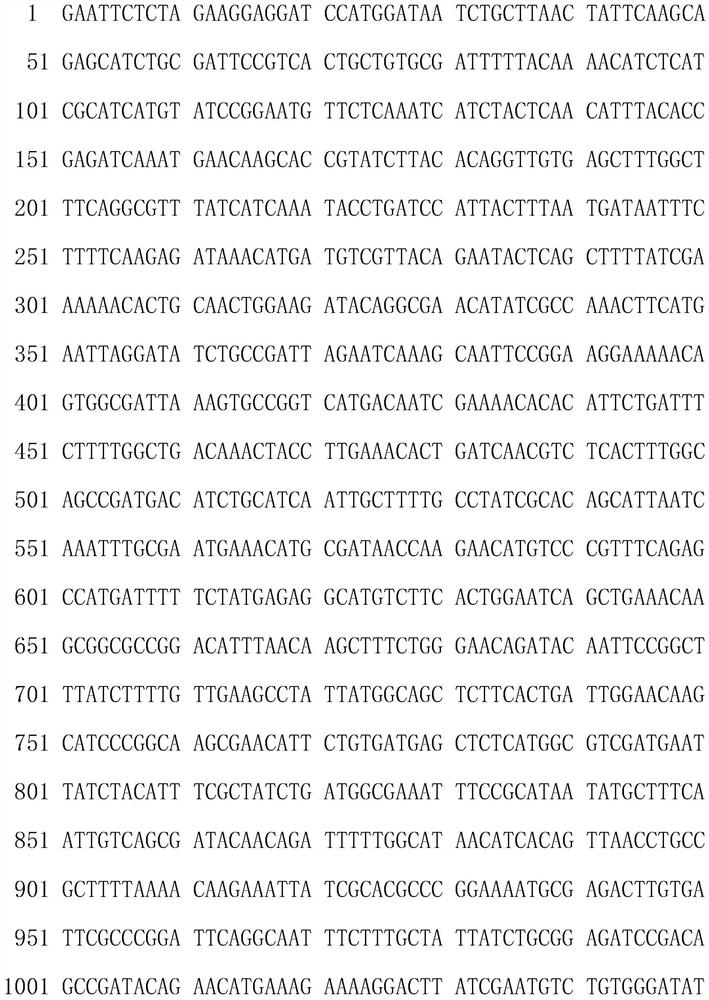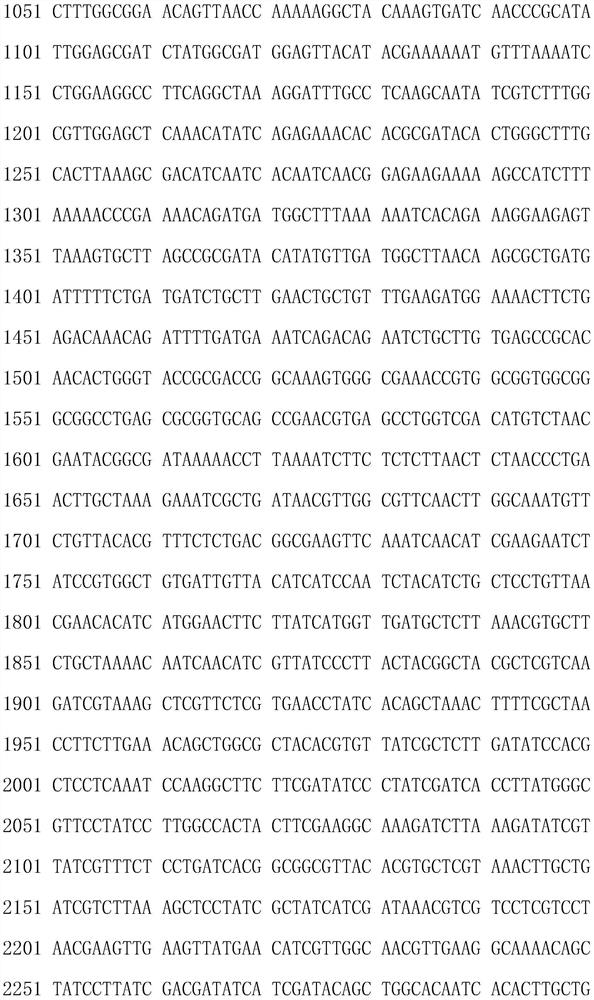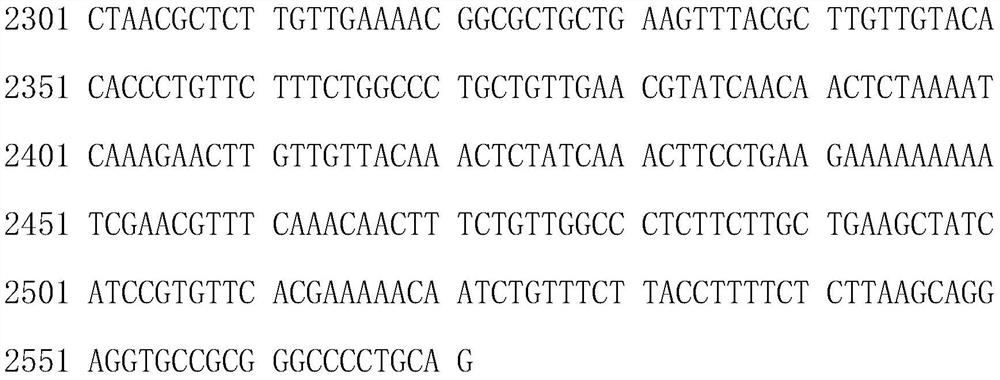Fusion enzyme for producing nicotinamide mononucleotide and application thereof
A single nucleotide and nicotinamide technology, applied in the biological field, can solve the problem of not being able to significantly increase the expression of nicotinamide mononucleotide, and achieve the effect of improving enzyme conversion efficiency and simplifying the process
- Summary
- Abstract
- Description
- Claims
- Application Information
AI Technical Summary
Problems solved by technology
Method used
Image
Examples
Embodiment 1
[0023] In this example, a fusion enzyme expression element consisting of nicotinamide phosphoribosyltransferase gene from Haemophilus ducreyi, linking peptide and ribose phosphate pyrophosphate kinase from Bacillus amyloliquefaciens was cloned into the large intestine Bacillus expression plasmid pSE380.
[0024] Construction of recombinant plasmid pSE380-NL1P
[0025] The following DNA fragments are artificially synthesized:
[0026]
[0027]
[0028]
[0029] The synthesized DNA fragment and plasmid pSE380 were double digested with restriction endonucleases EcoR I and Pst I, then ligated with T4 ligase, transformed into Escherichia coli DH5α competent cells, and the recombinant plasmid pSE380-NL1P was obtained after screening and identification .
[0030] 2. Construction of recombinant plasmid pSE380-NL2P
[0031] The following DNA fragments are artificially synthesized:
[0032]
[0033] The synthesized DNA fragment and plasmid pSE380-NL1P were double digeste...
Embodiment 2
[0041] In this example, the fusion enzyme in Example 1 was cloned into the Bacillus subtilis integration plasmid pMLK83.
[0042] 1. Construction of recombinant plasmid pMLK83-amyM
[0043] According to the promoter amyM sequence annotated in Genbank, the upstream primer was designed as 5'cccaagcttctgtacacttgcgtcctcca 3' and the downstream primer as 5'cgggatcctctcctcccctttcaa tgtg 3'. PCR reaction system 100ul: DNA template (Bacillus licheniformis ATCC 14580 total DNA) 1ul (about 20ng), 5×PrimeSTAR Buffer 20ul, 10pmol / ul dNTP 2ul, 10pmol / ul forward and reverse primers 2ul each, 2.5U / ulPrimeSTAR HS DNA polymerization Enzyme 1ul, add ddH2O to 100ul. PCR reaction program: 94°C for 5min; 30 cycles of 94°C for 30s, 60°C for 30s, and 72°C for 30s; 72°C for 10min; store at 4°C. The PCR fragment and plasmid pMLK83 were double digested with restriction endonucleases BamHI and Hind III respectively, then ligated with T4 ligase, transformed into Escherichia coli DH5ɑ, and the recombina...
Embodiment 3
[0050] Construction of recombinant Bacillus subtilis and expression of nicotinamide mononucleotide
[0051] Using conventional transformation methods, pMLK83-amyM-NL1P was transformed into Bacillus subtilis 1A751, and the bacterial solution was coated with neomycin (20ug / ml) LB plates, and amylase-deficient transformants were screened to obtain the Bacillus subtilis genetically engineered strain 1A751 [amyM -NL1P].
[0052] 1A751[amyM-NL2P], 1A751[amyM-NL3P] and 1A751[amyM-N] can be obtained by the same method.
[0053] The above-mentioned genetically engineered strains were respectively inserted into basal salt medium (containing 10ug / ml neomycin and 0.5% nicotinamide), and after culturing for 30 hours, the content of nicotinamide mononucleotide in the cells was measured.
[0054] At the same time, E. coli DH5ɑ recombinant strains containing pSE380-N, pSE380-N1P, pSE380-N2P and pSE380-N3P were inserted into basal salt medium (containing 100 mg / ml ampicillin and 0.5% nicotina...
PUM
 Login to View More
Login to View More Abstract
Description
Claims
Application Information
 Login to View More
Login to View More - R&D
- Intellectual Property
- Life Sciences
- Materials
- Tech Scout
- Unparalleled Data Quality
- Higher Quality Content
- 60% Fewer Hallucinations
Browse by: Latest US Patents, China's latest patents, Technical Efficacy Thesaurus, Application Domain, Technology Topic, Popular Technical Reports.
© 2025 PatSnap. All rights reserved.Legal|Privacy policy|Modern Slavery Act Transparency Statement|Sitemap|About US| Contact US: help@patsnap.com



